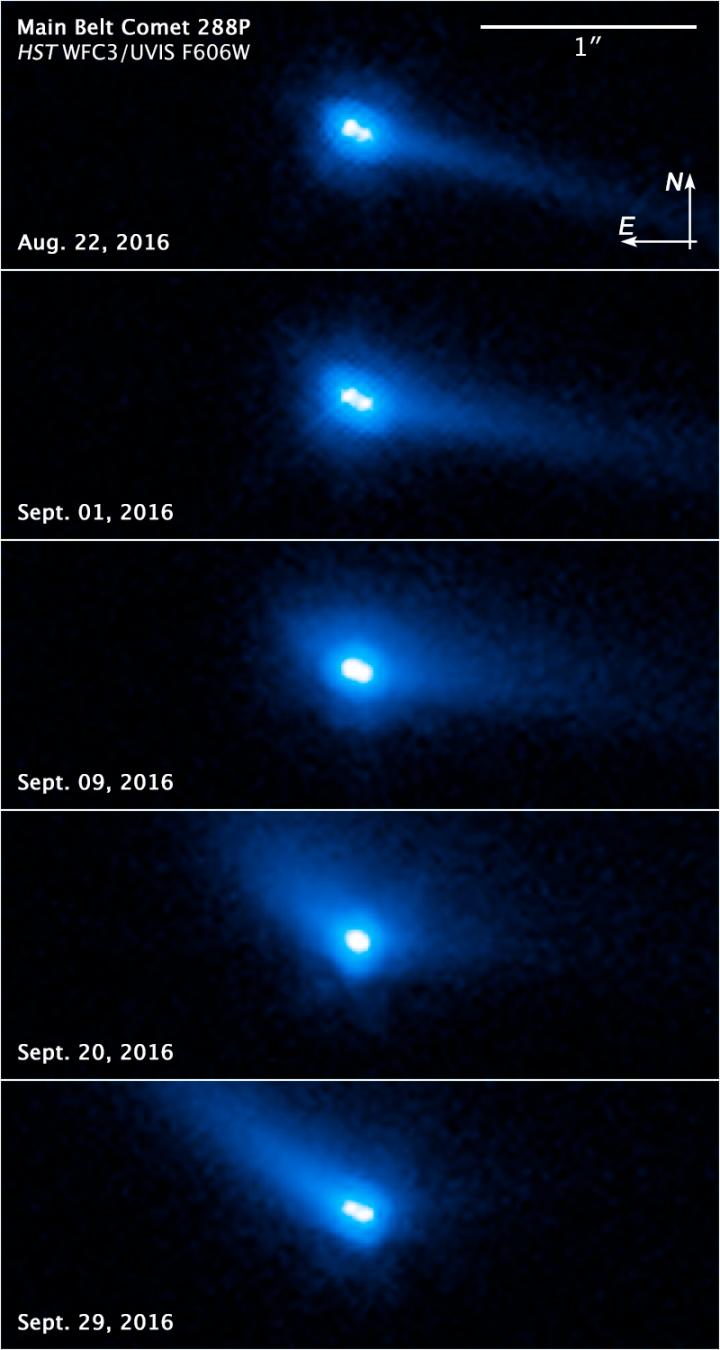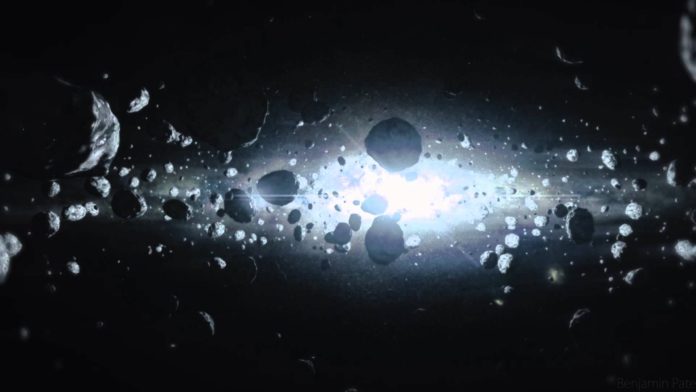Something rather unusual has been spotted by NASA’s Hubble Space Telescope just recently – two asteroids that have comet-like features orbiting one another. The sight included a bight halo of a material called a coma as well as a long tail of dust trailing behind. Asteroid 300163 (2006 VW139) was imaged in September 2016 using the Hubble, and it was then that it revealed there were, in fact, two asteroids, of nearly the same size, orbiting one another around 60 miles apart.

The asteroid was first discovered back in 2006 by Spacewatch. Possible cometary activity was then reported in 2011 by Pan-STARRS. Spacewatch and Pan-STARRS are both NASA asteroid survey projects and part of the Near-Earth Object Observations Program. After the second observation was recorded by Pan-STARRS, it also became the first known binary asteroid that’s also classed as a comet. It was also given a comet designation of 288P at this time.
More recent observations to come from the Hubble include those which conform ongoing activity within the binary system. “We detected strong indications for the sublimation of water ice due to the increased solar heating – similar to how the tail of a comet is created,” said Jessica Agarwal of the Max Planck Institute for Solar System Research in Germany. Understanding these binary asteroid systems could give researchers clues as to the evolution of the Solar System. Studying main-belt comets could help us understand how water became to exist on the Earth all those many years ago.
The team suggests that 2006 VW139/288P has been in existence as a binary system for around 5,000 years and the most likely explanation for its formation is due to a breakup caused by fast rotation. Because this binary system is so very different to all other known types, it raises a few questions as to how these systems came to be in the asteroid belt. Agarwal says to answer that question more “theoretical and observational work, as well as more objects similar to this object,” will be needed.
More News to Read
- Are Enzymes the Answer to Curing Diseases Such as Cancer and Diabetes?
- NASA’s First 3D Printed Rocket Part is Ready for Testing
- New Breakthrough, Now Cells Can Be Programmed to Fight Disease
- Researchers Discover Bacteria Can Damper the Effects of Chemotherapy
- Physicists Decipher Magnetic Ordering in New MultiFerroic Material

